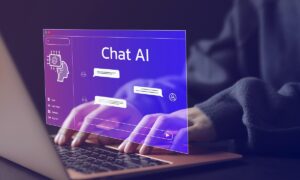Introduction
In the ever-evolving landscape of technology, generative artificial intelligence (AI) stands at the forefront, captivating both innovators and skeptics alike with its potential to reshape the way we interact with data. This groundbreaking technology, fueled by advanced algorithms and machine learning, has ushered in a new era of possibilities across various industries. However, as we delve into the realm of generative AI, it becomes imperative to unravel the dual nature of its impact—understanding both the remarkable advantages it brings to the table and the nuanced limitations that warrant careful consideration.
Advantages of Using Generative AI
1. Endless Possibilities: One of the biggest advantages of using generative AI is its ability to create infinite possibilities. Unlike traditional AI systems, which are designed for specific tasks and have limited outputs, generative AI can produce a wide range of outcomes and solutions.
2. Creativity Enhancement: Generative AI has the potential to enhance creativity in various fields, such as art, music, design, and writing. By generating new ideas and concepts that humans may not have thought of before, it can push the boundaries of what is possible and inspire users to think outside the box.
3. Time-Efficient: With generative AI, tasks that would typically take hours or even days for humans to complete can be done in minutes or seconds. This saves time and allows individuals to focus on other essential aspects of their work.
4. Cost-Effective: The use of generative AI technology can also lead to cost savings in different industries by automating certain processes that previously required human labor. This can result in increased productivity and efficiency while reducing expenses.
5. Personalization: Generative AI enables businesses to personalize products or services according to individual customer needs through data analysis and pattern recognition. This level of personalization can improve customer satisfaction and ultimately lead to increased sales.
Limitations of Using Generative AI:
1. Lack of Human Touch: While generative AI technology is highly efficient at creating new ideas and solutions, it lacks the human touch necessary for some tasks. his can be a disadvantage in industries that require a high level of emotional intelligence and human interaction, such as customer service or counseling.
2. Dependence on Data: Generative AI heavily relies on large amounts of data to generate outputs. Without sufficient data, the results may not be accurate or diverse enough to meet the desired goals.
3. Bias and Ethics Concerns: Like any AI technology, generative AI is susceptible to bias based on the data it is trained on. This can lead to discriminatory outcomes and ethical concerns if not properly monitored and addressed.
4. Lack of Originality: While generative AI has the potential to enhance creativity, there is also a risk of producing unoriginal or repetitive ideas because it relies on existing data sets for inspiration.
5. Limited Understanding: Unlike humans, who can understand context and make logical connections between different concepts, generative AI lacks this ability and may produce nonsensical or irrelevant outputs in some cases.
Future Possibilities of Generative AI
The development of generative AI has opened up a world of possibilities and potential for the future. The technology is still in its early stages, but it is rapidly advancing and constantly evolving. In this section, we will delve into some of the exciting future possibilities of generative AI and how it could potentially revolutionize various industries.
1. Art and Design:
One of the most obvious applications of generative AI is in the field of art and design. Already, we have seen AI-generated artworks being sold for thousands of dollars at auctions. With advancements in generative AI, artists can use these tools to enhance their creativity and bring their visions to life. This technology can assist artists in generating ideas, creating new designs, and even producing digital art pieces that are indistinguishable from human-made ones.
2. Music:
AI has already made its way into the music industry with popular applications like Spotify’s personalized playlists or generating background music for videos using algorithms. However, with generative AI, musicians could take things a step further by creating completely new compositions based on their preferences or styles. This could also open up opportunities for collaboration between humans and machines in the music-making process.
3. Fashion:
Fashion designers often need to come up with innovative designs every season, which can be challenging and time-consuming. With generative AI, designers can generate an endless number of garment designs based on specific criteria, such as color palette or fabric choice.
Conclusion
Generative AI has already proven itself to be a game-changer in various industries and has the potential to bring about even more significant changes in the future. As we continue to push the boundaries of what is possible with this technology, let us also remember to use it for the greater good and embrace its potential for positive impact on our world. With creativity unleashed through generative AI, there are endless possibilities waiting to be discovered.



































